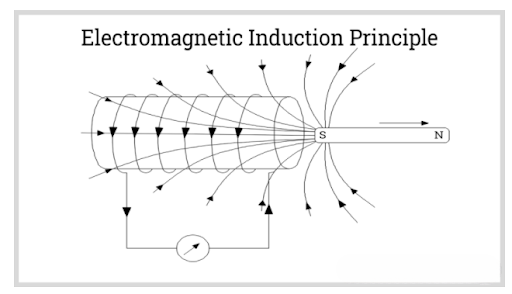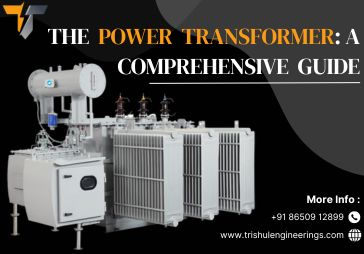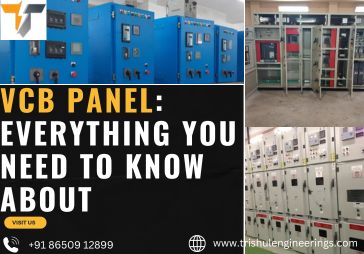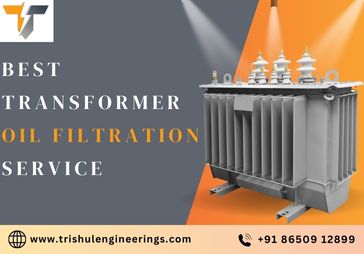In the realm of electrical engineering, Best Power Transformer plays a pivotal role in the efficient transmission and distribution of electricity. These essential devices facilitate the transfer of electrical energy across different voltage levels, ensuring a seamless flow within power grids. This article delves into the intricacies of power transformer, exploring their types, operating principles, components, and a notable manufacturer – Trishul Engineering Corporation.
What is the Best Power Transformer?
A power transformer is a crucial electrical device that facilitates the efficient transmission and distribution of electrical energy within power systems. Operating on the principles of electromagnetic induction, it transforms voltage levels, allowing electricity to travel seamlessly across diverse circuits. Step-up transformers elevate voltage for long-distance transmission, while step-down transformers reduce it for safe consumption.
With primary and secondary windings, the transformer’s core, made of laminated iron or steel, provides a low-reluctance path for magnetic flux. Essential components, including insulation, tap changers, and cooling systems, ensure reliable performance. It plays a pivotal role in maintaining stable power grids, serving as the backbone of our interconnected world.
Types of Best Power Transformer
Best Power transformer come in various types, each serving specific purposes within the electrical infrastructure. The primary classifications include:
Step-Up Power Transformers:
These transformers elevate voltage levels originating from power stations, facilitating efficient long-distance transmission while minimizing energy losses. Their significance lies in the crucial role they play in delivering electricity to remote regions, ensuring the viability of power supply networks
Step-Down Power Transformer:
In contrast, step-down transformers are instrumental in reducing voltage levels before distributing electricity to end users. Their pivotal role in providing safe and usable power for residential, industrial, and commercial purposes makes them indispensable components in the power distribution chain.
Three-Phase Power Transformer:
Specifically crafted for handling three-phase power systems prevalent in industrial settings, these transformers offer a more balanced and efficient power distribution compared to their single-phase counterparts.
Distribution Power Transformer:
Operating within local distribution networks, distribution transformers effectively lower voltage levels to suit the requirements of homes and businesses, guaranteeing a stable and reliable power supply for everyday use.
Instrument Transformers:
Embracing current transformers and voltage transformers, this category is essential for measuring and monitoring electrical quantities within power systems. Their precise readings contribute to the accuracy of protective relays and meters, ensuring the integrity of the entire electrical infrastructure.
Operating Principle of Best Power Transformer
The fundamental principle behind the operation of a electrical power transformers is electromagnetic induction. When an alternating current (AC) flows through the primary winding of the transformer, it creates a changing magnetic field. This changing magnetic field induces a voltage in the secondary winding, according to Faraday’s law.

The voltage transformation is determined by the ratio of turns in the primary and secondary windings. For a step-up transformer, the secondary winding has more turns than the primary winding, resulting in an increased output voltage. Conversely, in a step-down transformer, the secondary winding has fewer turns, leading to a decreased output voltage.
Efficiency in best power transformers is crucial, and modern designs incorporate materials with low magnetic losses and high electrical conductivity to enhance performance.
Components of Power Transformer
They are intricate devices comprising vital components that collaborate harmoniously to facilitate the seamless transfer of electrical energy:
Core:
Typically crafted from laminated iron or steel sheets, the core serves as a foundational element. It establishes a low reluctance path for the magnetic flux generated by the primary winding, thereby enhancing the overall efficiency of the transformer.
Windings:
Transformers boast two essential sets of windings – primary and secondary. The primary winding connects to the input voltage source, while the secondary winding is linked to the load. The number of turns in each winding governs the voltage transformation ratio, a critical parameter in the transformer’s functionality.
Insulation:
Insulation materials play a pivotal role in isolating the windings, preventing electrical breakdown. This crucial component ensures the transformer’s safe and reliable operation, particularly in high-voltage applications where the risk of breakdown is more pronounced.
Tap Changer:
A tap changer assumes a crucial role in adjusting the transformer’s turn ratio, offering a mechanism for voltage regulation. This feature proves instrumental in compensating for fluctuations in the electrical supply and demand, ensuring stability and reliability in diverse operating conditions.
Cooling System:
Given the heat generated during transformer operation, a robust cooling system is indispensable to maintain optimal temperature levels. Common cooling methods include oil-immersed cooling and forced air cooling, contributing to sustained performance and longevity.
These components collectively form the intricate anatomy of these transformers, each playing a specific role in guaranteeing efficiency, reliability, and longevity in the transfer of electrical energy across diverse applications and operating conditions.
Where to buy the Power Transformer – Trishul Engineering Corporation:
Trishul Engineering Corporation stands out as a reputable manufacturer and supplier of high-quality power transformer. With a commitment to innovation and reliability, we have been a key player in the electrical engineering industry.
The company offers a diverse range of these transformers, including step-up, step-down, and distribution transformers, catering to the specific needs of power utilities, industries, and infrastructure projects. We prioritize the use of advanced materials and technologies to ensure their transformers meet stringent performance standards and contribute to the overall efficiency of power systems.
Customers can rely on us for transformers that adhere to quality standards, undergo rigorous testing, and come with comprehensive warranties. The company’s dedication to customer satisfaction and continuous improvement has established it as a trusted partner in the power transmission and distribution sector.
Conclusion
Best Power transformer is indispensable components of the modern electrical infrastructure, facilitating the efficient transfer of electrical energy across various voltage levels. Their diverse types cater to different stages of power transmission and distribution, ensuring a reliable and steady power supply for end-users.
Understanding the operating principles and components of these transformers provides valuable insights in maintaining the stability of power grids. Trishul Engineering Corporation, with its commitment to quality and innovation, stands as a notable provider of these transformers, contributing to the advancement and reliability of electrical systems worldwide.
As we continue to evolve in the digital age, the importance of power transformer in supporting our interconnected world cannot be overstated. Their silent contribution to powering homes, industries, and cities underscores the significance of these unassuming yet essential devices in our daily lives.
FAQs-
What is a power transformer used for?
A power transformer is used to transfer electrical energy between circuits through electromagnetic induction. It adjusts voltage levels for efficient transmission, ensuring a reliable and stable power supply in electrical grids.
What is a Power Transformer?
A power transformer is an essential electrical device that transfers electrical energy between circuits through electromagnetic induction. It adjusts voltage levels for efficient transmission and distribution within power systems.
What is the difference between Power transformer and Distribution Transformer?
A power transformers is designed for high-voltage transmission, altering electricity levels between power stations and substations. In contrast, a distribution transformer operates in local networks, reducing voltage for safe usage in homes and businesses.




